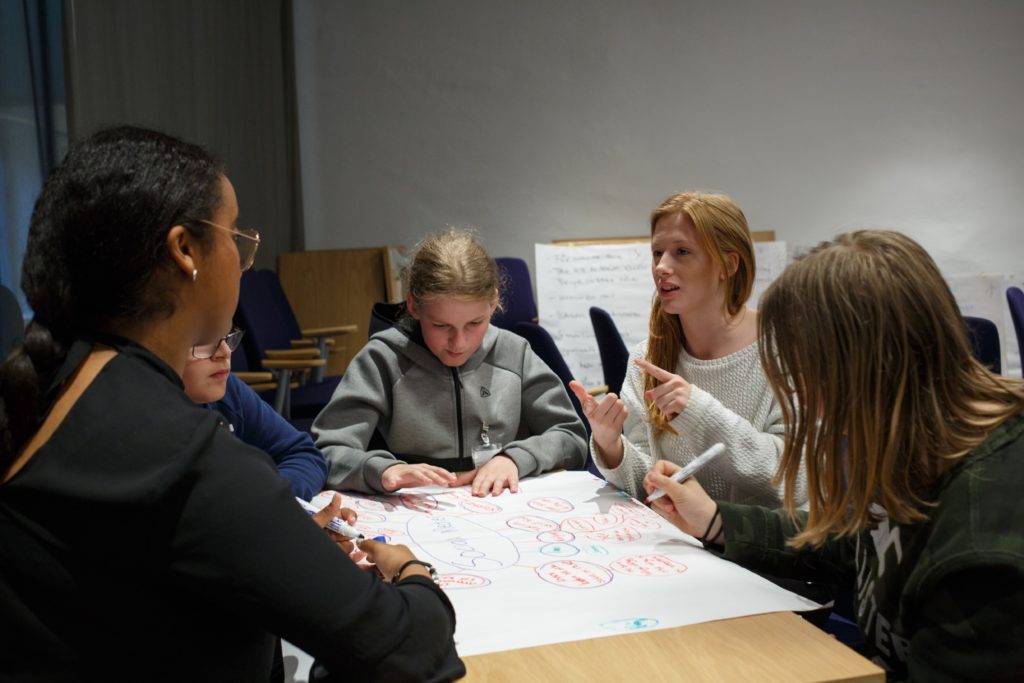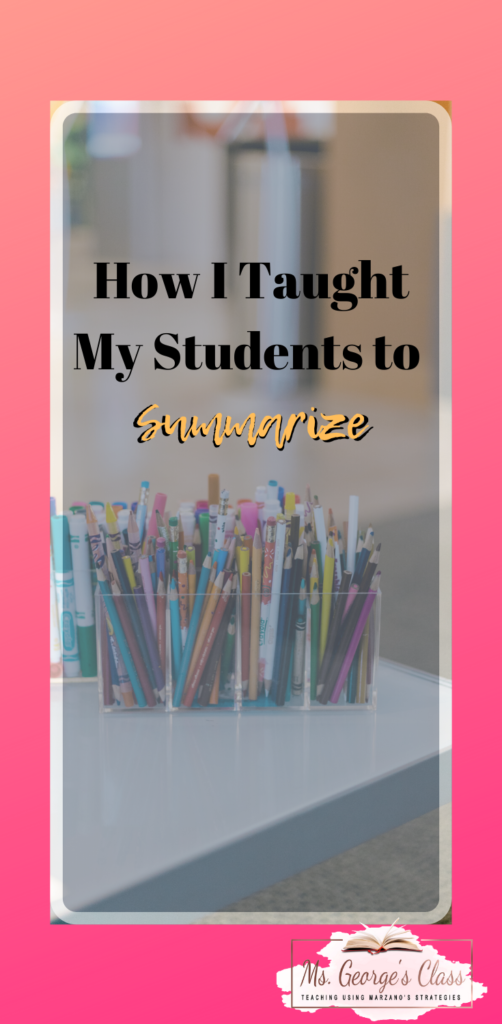
For many of us teachers, summarizing and note-taking may come easily for us. We had to do it in high school and college, and we may have a favorite note-taking technique. My favorite is the outline format. However, some of our students struggle with identifying the central idea of a nonfiction article and may quickly give up when it is time to take notes. Summarizing is when students record critical information from a text. According to Marzano, summarizing techniques require complex cognitive processes. How can we keep those students engaged? We can show them how to summarize and take notes with a few steps.
How to Write a Summary- The “Rule-Based” Strategy
- Read the passage.
- Delete trivial material.
- Delete redundant material.
- Substitute superordinate terms for a list (e.g., “flowers” for “daisies”).
- Select a topic sentence or invent one if it is missing.
In action, it looks like this:
- The teacher instructs students to read the passage quietly to themselves.
Passage:
“Having a paying job at some time during high school has become a near-universal adolescent experience (Committee on the Health and Safety Implications of Child Labor, 1998;U.S. Department of Labor, 2000). Many youth start to work informally even earlier, at about the age of twelve, most often in their own neighborhoods, babysitting, shoveling snow, cutting grass, or doing various odd jobs. At first, paid work is episodic and generally quite limited. By the age of 16, adolescent workers are more likely to have formal jobs, working in the retail and service sectors of the economy, especially in fast food restaurants, grocery stores, or other retail stores. Employment becomes more regular and more time-consuming during the latter years of high school, with many teens working 20 or more hours per week” (Mortimer).
- The teacher performs a think-aloud and removes trivial and redundant material.
Having a paying job at some time during high school has become a near-universal adolescent experience (Committee on the Health and Safety Implications of Child Labor, 1998;U.S. Department of Labor, 2000). Many youth start to work informally even earlier, at about the age of twelve, most often in their own neighborhoods, babysitting, shoveling snow, cutting grass, or doing various odd jobs. At first, paid work is episodic and generally quite limited. By the age of 16, adolescent workers are more likely to have formal jobs, working in the retail and service sectors of the economy, especially in fast food restaurants, grocery stores, or other retail stores. Employment becomes more regular and more time-consuming during the latter years of high school, with many teens working 20 or more hours per week” (Mortimer).
A summary would look like this: Many youths start to work informally at the age of twelve. By the age of 16, adolescent workers are more likely to have formal jobs. During the latter years of high school, many teens work 20 or more hours per week.

Using a Summary Frame
In the book, Classroom Instruction that Works: Research-Based Strategies for Increasing Student Achievement by Marzano, et al., there are several summary frames you may use, such as The Narrative Frame, The Topic-Restriction-Illustration Frame, The Definition Frame, The Argumentation Frame, The Problem/Solution Frame, and The Conversation Frame. I used The Topic-Restriction-Illustration Frame with my career exploration students because it has three questions to guide them while reading a nonfiction text. The questions are topic (T)-general statement about the topic to be discussed, restriction (R)- limits the information in some way, and illustrations (I)-exemplifies the topic or restriction. The summary frame assists students to develop a short summary with the passage stated above.

Use a Scale to Check for Mastery
Currently, I have been using Marzano’s scales to grade summaries, feedbacks, and notetaking. I gather this scale from Recording and Representing Content: THE MARZANO COMPENDIUM OF INSTRUCTIONAL STRATEGIES. This online tool has strategies available for teachers to use. Use the scale to identify if the student needs more instruction on writing summaries. I also perform the think-pair-share strategy to have students share their summaries with classmates. This allows students to listen and critique other summaries.
4=excellent; 3=good; 2=needs improvement; 1=unacceptable; 0=no judgment
| Score 4.0 | Students summarize critical information in their own words and generate their own conclusions about the information. |
| Score 3.0 | Students summarize critical information in their own words and demonstrate a clear understanding of the information. |
| Score 2.0 | When responding to prompts from the teacher, students are able to identify critical information in a text or lesson. |
| Score 1.0 | When responding to prompts from the teacher, students struggle to identify critical content or information. |
In conclusion, a good summary will have the main idea and critical information from the text. Summarizing is the first step to directing students to use outlines. Students have to know how to identify critical information before arranging big ideas and details about a topic. Teaching this skill to students will help them in all content areas and on standardized tests.
How do you teach summarizing within your classes?
Works Cited
Marzano, Robert J, Debra Pickering, and Jane E. Pollock. Classroom Instruction That Works: Research-based Strategies for Increasing Student Achievement. Alexandria, Va: Association for Supervision and Curriculum Development, 2001.
Mortimer, Jeylan. “The Benefits and Risks of Adolescent Employment.” National Institute of Health. 2010 January 1; 17(2): 8–11, https://www.ncbi.nlm.nih.gov/pmc/articles/PMC2936460/pdf/nihms220511.pdf. Accessed 5 October 2019.




I’m really enjoying the design and layout of your blog. It’s a very easy on the eyes which makes it much more enjoyable for me to come here and visit more often. Did you hire out a designer to create your theme? Great work!
Hi, thank you! I purchased the layout from a theme company named Pretty Darn Cute Design. The company used my website to showcase their theme. I did the hard work by following their directions and just build posts on it. Thank you again.
Good post. I learn something totally new and challenging on blogs I stumbleupon everyday. It’s always helpful to read articles from other authors and practice something from other websites.
Thank you!